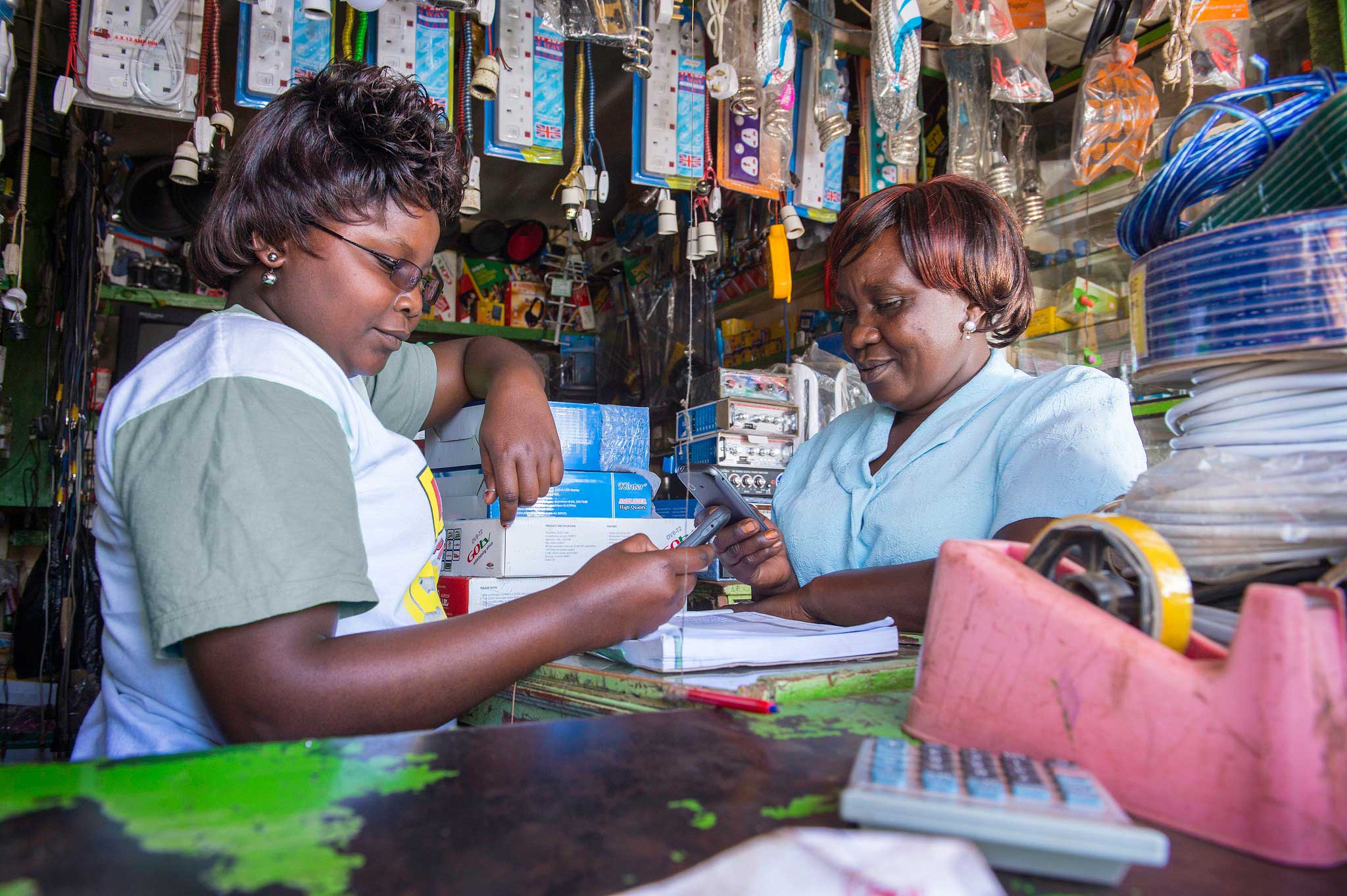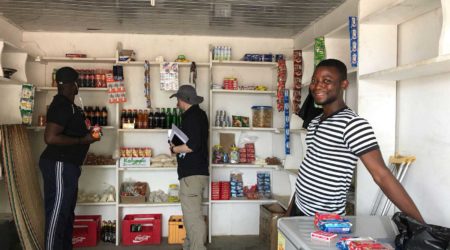Rethinking Financial Inclusion Through Small Businesses and their Smartphones
How FIBR combines low-income customer’s relationships with local businesses, emerging data captured through smartphones, and a broader set of partners to deliver alternative linkages to financial services
Financial Inclusion Started With Reaching the Underserved
Financial inclusion began with the practical hypothesis of increasing access to financial services for the poor — by creating more opportunities for a direct relationship between financial institutions and low-income customers. These new customers could now shape household incomes, save money, apply for credit and insurance, and conduct financial transactions that were previously limited or cost-prohibitive in a cash economy. Access to transactional banking services was seen as the first rung on a financial ladder, followed by personal financial management and ultimately the potential to increase household wealth and rise out of poverty.
Today, while 46% adults in the poorest 40% of households in developing countries have an account at a financial institution, the volume of transactions conducted in small value bank accounts is still low. That is, while low-income customers are increasingly able to access financial services, the usage and therefore the value and impact of the financial services, is limited. There continues to be a large part of the financial lives of these populations that remains financially excluded. After ten years, we must ask ourselves, how can we make financial inclusion more meaningful and provide the impact that we set out to create in this space?
FIBR Rethinks the Model with Indirect Financial Inclusion
FIBR, which stands for Financial Inclusion on Business Runways, a new project of BFA Global in partnership with The MasterCard Foundation, uses a different approach — which we call indirect financial inclusion to create alternative linkages between low-income customers and digital financial services. By focusing on digitizing the existing business relationships that low-income customers have (and depend on) with the local businesses in their communities, new data can be captured and analyzed, one that existing and new financial service providers can use to create more targeted, useful products and services. FIBR digitizes these existing business relationships and works with partners to convert the evidence of them into useable financial services data.
FIBR engages several types of entities to build indirect channels:

- Small and Medium Enterprises (SME) are the touchpoints. Shops, schools, employers or businesses are vital nodes to the FIBR model, because their rate of smartphone adoption is much higher than the population as a whole and “touch”, that is, they interact and transact with a web of low-income employees, suppliers and customers on a regular basis and mainly in cash. Touchpoints have a lot of trust with their customers and also know a lot about their customers and their creditworthiness (eg. shopkeepers extend store credit on a regular basis to the customers they know).
- Partners have or can create connections that allow for the flow of data and financing, also known as linkages. A range of service providers can provide their software via the small businesses’ smartphones, enabling new digital financial services with the ability to generate and transmit massive amounts of data. Examples of FIBR’s Partners are IT companies specialized in making the connections, or larger corporations with an existing large base of low-income suppliers or employees.
- Financial Services Providers (FSP) offer their financial services to clients through the touchpoints using the linkages provided by the Partner. The FSPs may do this by providing retail funding to end clients, wholesale funding to the Partner or a platform for Partners to provide funding.
What does FIBR Offer its Partners and the Industry at Large?
As a program, FIBR will primarily provide partners with grant funding and technical assistance to develop alternative linkage solutions. The BFA Global team (a group of seasoned senior experts in data science, APIs, user design, financial services, R&D, business strategy, M&E) works on an engagement basis with a potential partner first to identify priority customer pain points and digital solutions such as smartphone apps that enable the linkage of these small businesses to a range of appropriate financial services.
As a larger ecosystem-level goal, FIBR aims to learn about the role of emerging data and how to foster existing or new ways to link the underserved to financial services. In particular, FIBR will create knowledge relevant for industry players in:
- Financial inclusion
- Mobile for Development
- Financial technology (fintech) entrepreneurs and companies,
- Social impact & other investors in technology, and
- The micro, small and medium enterprises (MSME and SME)
FIBR will pursue active learning around in three main question themes that we hope to answer with supporting practical examples and experimentation over the life of the project. These are:
Agenda 1: What is the most effective way for local touchpoint clients to digitize?
Agenda 2: Can FSPs offer, fund or underwrite these digital financial services?
Agenda 3: To what extent can FSPs become channels for developing richer and more effective digital financial services?
BFA Global launched FIBR in Accra, Ghana in February 2016. The project will be active for four years and already has engaged several partners and financial institutions in design sprints as initial discovery projects in Ghana. In 2017, the team will also launch in Tanzania, with early discussions already underway with potential partners.
FIBR’s indirect channels open the door to deploying new data sets, abilities, advantages and models by tapping into a broader set of financial and non-financial partners to the challenge of the next generation of financial inclusion initiatives by cultivating the inclusive fintech space. How this happens and who will do this best is still largely untested, but we hope that the learning from FIBR will shape the global agenda around the usage of business data to drive more meaningful financial inclusion.



